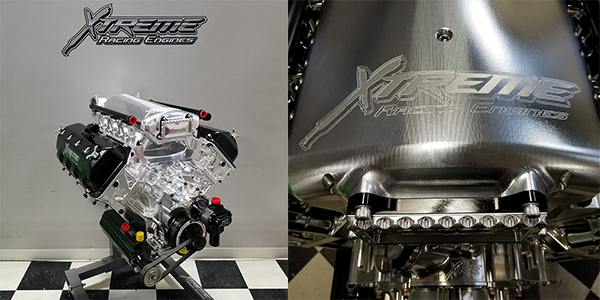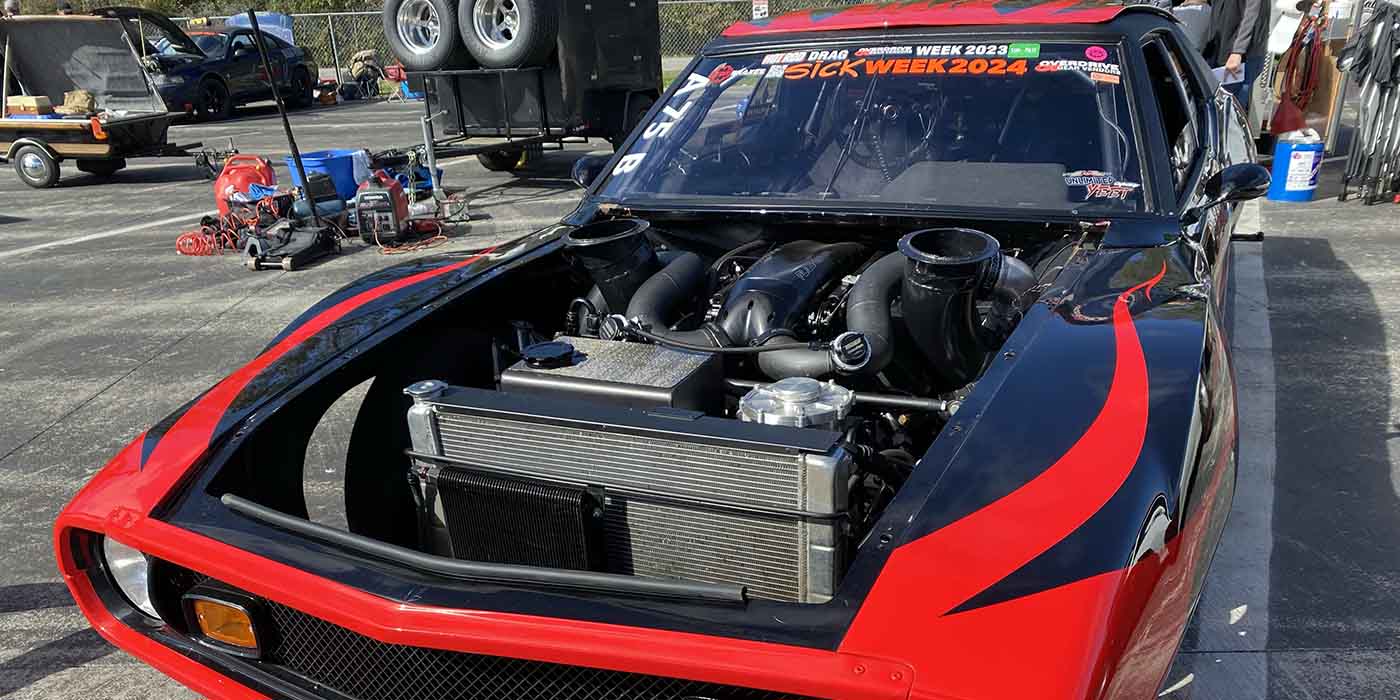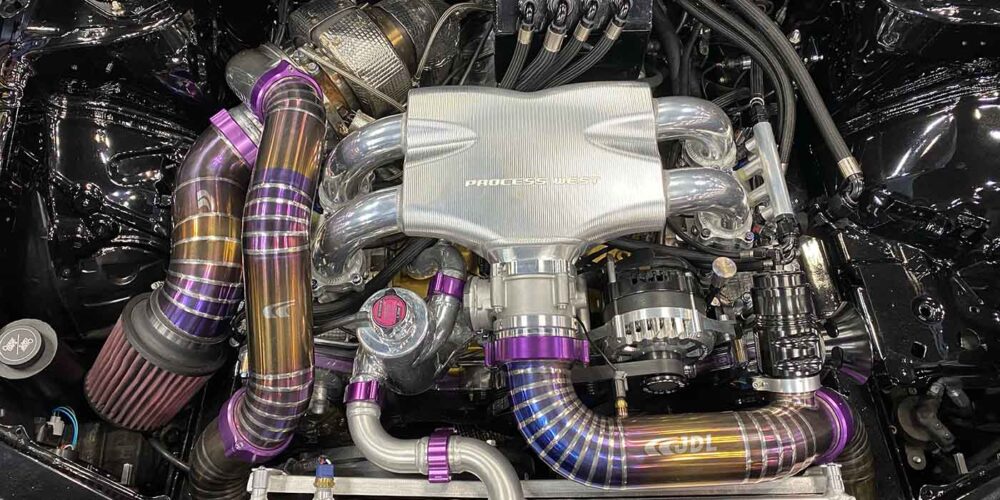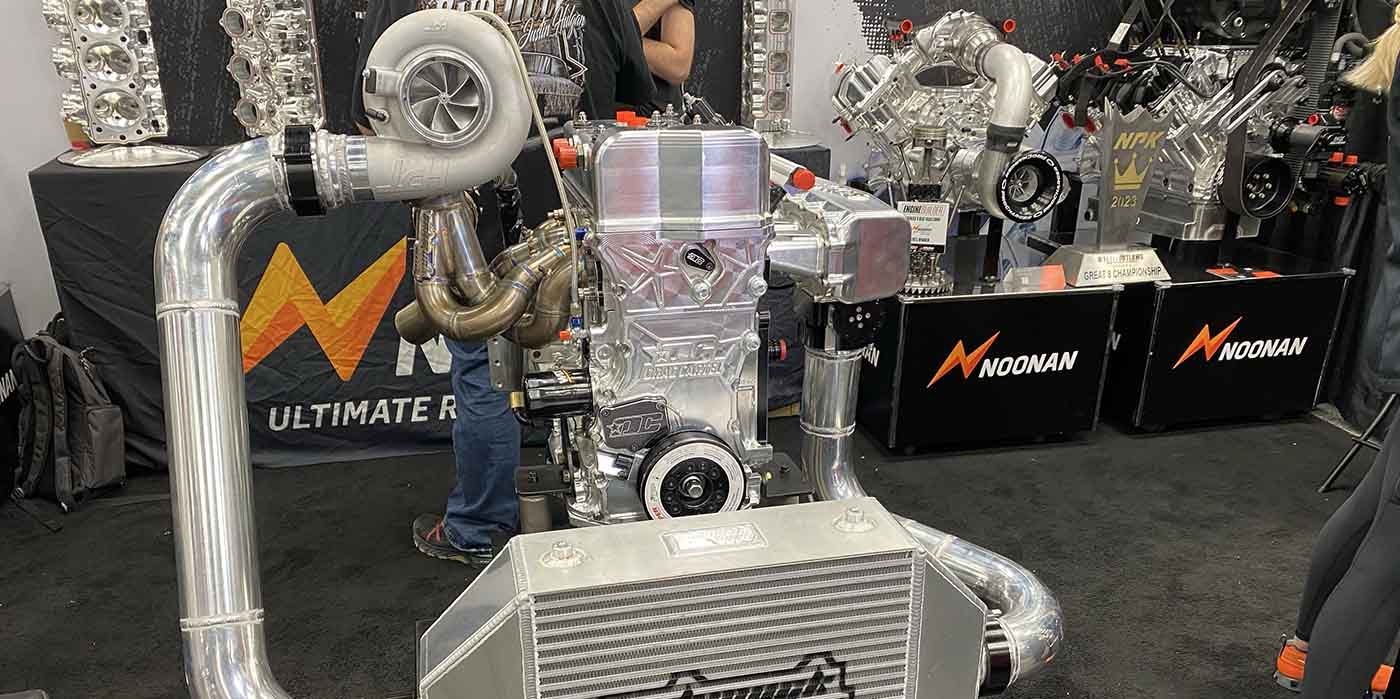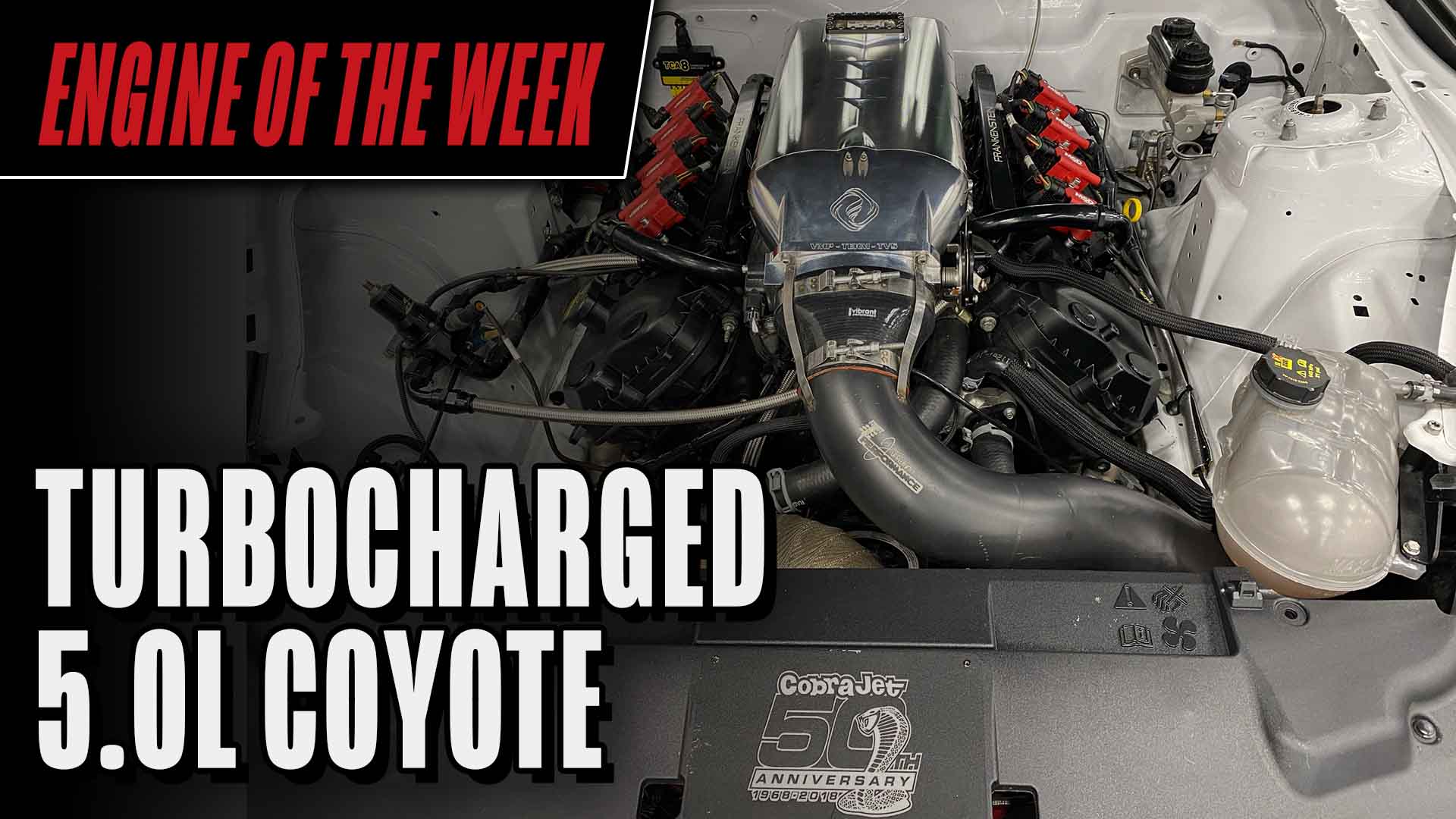On August 11th, Carl Stevens Jr. showed up to Bandimere Speedway in Morrison, CO ready to race in the Drag Illustrated World Series of Pro Mod – a ¼-mile drag race with $100,000 on the line. One run at a time, Stevens, who owns Xtreme Racing Engines, put together a better and faster run than the last.
He started his day going a blistering 5.93 at 245.94 mph in his turbocharged ’69 Camaro beating Marc Caruso. He then had a matchup with two-time NHRA Pro Stock world champion Erica Enders, defeating her with a 5.897 at 246.66 mph to Enders’ 5.922 at 243.99 mph. Next in line was Mike Bowman, who Stevens bested by only .007 seconds with a 5.880 at 246.21 mph to Bowman’s 5.912 at 249.03 mph. Stevens then had an easy time getting beyond Michael Biehle with a 5.863 at 245.90 mph, as Biehle went red.
In the final, Stevens went head-to-head against Danny Rowe, once again offering up a spectacular run, this time a 5.856 at 245.26 mph (a World Series of Pro Mod record) to Rowe’s 5.949 at 242.54 mph, and took home the six-figure payday and a custom World Series of Pro Mod championship belt.
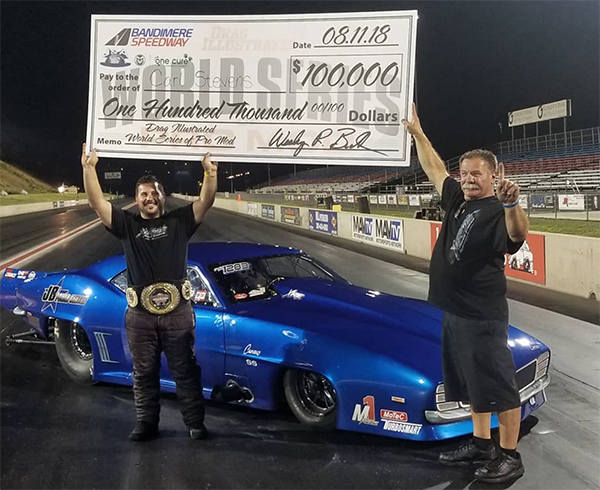
“This is easily the biggest event win we’ve ever had,” Stevens Jr. told Drag Illustrated. “Being on the biggest stage for Pro Mod and getting the win, it’s just incredible. We were really pretty confident and just trying to not beat ourselves. Everything just fell together against some huge names.”
The victory for Stevens came during the biggest and richest Pro Mod drag race in history!
That was two weeks ago. Well before that win was ever a fleeting reality, Carl Stevens Jr. was in high school, wrenching on his streetcar.
“I got interested in engine building and owning a shop when I was in high school,” Stevens says. “I was working on my own personal car at the time. I got into fuel injection from there and that’s where it all came from.”
Stevens started a shop called Xtreme Race Cars, which focused on doing chassis work for racing – engine work was never really the primary business then.
“We did really well racing cars,” he says. “We were setting records and doing all kinds of good stuff with the engines we were building, so we got a lot of inquiries from people wanting us to build engines and that’s what kick-started Xtreme Racing Engines. Now, that’s our primary business and our primary focus. We don’t do any more chassis work. We’ve shifted everything over to just focus solely on engines and fuel injection.”
The Newton, NJ shop started back in 2005 building racecars. It wasn’t until 2010 that Xtreme shifted its focus to just engines.
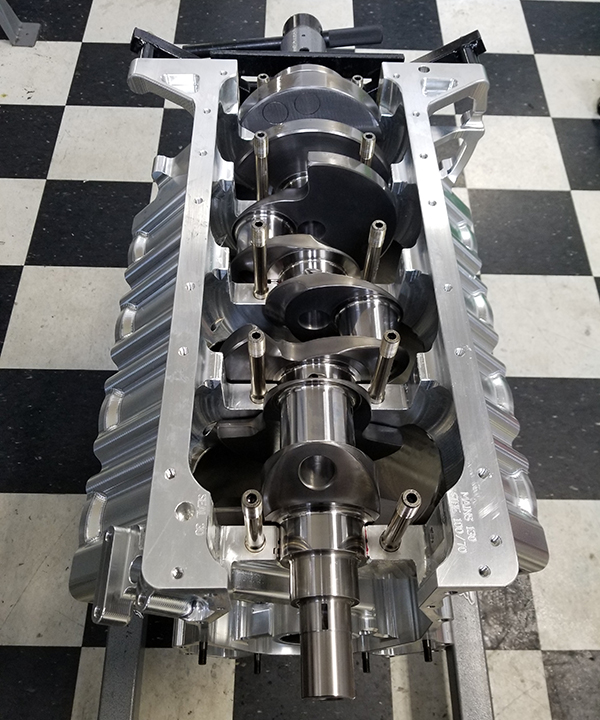
“We’ll work on any engine that’ll come in the door, but our focus is racing engines,” he says. “We don’t really do a whole lot with street car or street strip. It’s all really focused on just the hardcore racing. Our primary business is the blown alcohol Hemi stuff. Probably 99 percent of the engines we build are fuel injected, turbocharged engines. We’ll build a lot of LS stuff too. We’re pretty heavily involved in NHRA Pro Mod racing, PDRA Pro Boost and we’ve got a couple of customers in Outlaw 10.5 that run our combination. We’ve also done some marine engines for offshore powerboats.”
Xtreme Racing Engines is a full-service engine shop capable of doing just about everything in-house. The shop is 8,000 square feet and has five full-time employees. While Stevens still races and builds engines for himself, he has a long list of customers he’s always doing work for as well.
Recently, Xtreme finished up an all-billet Chrysler Hemi-based NHRA Pro Mod engine for repeat customer Rick Hord.
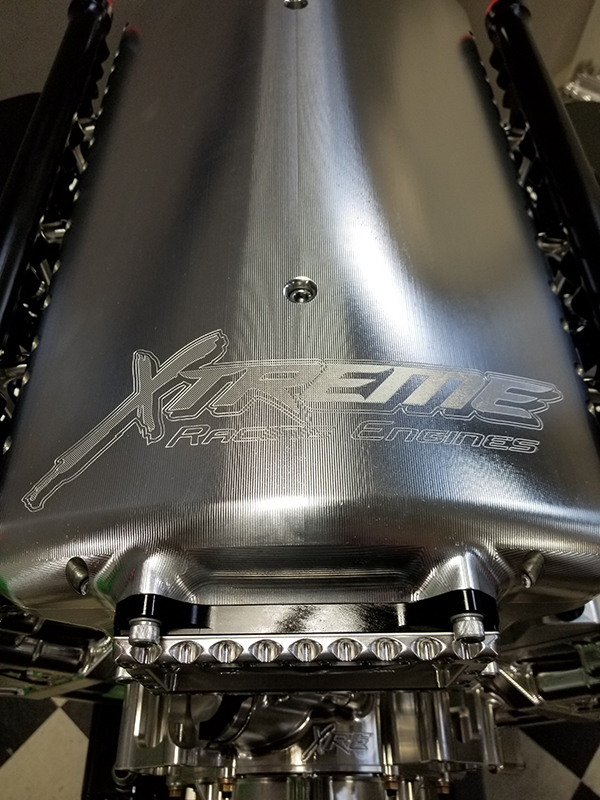
“The basic platform for one of these engines is a 4.470˝ bore and 4.150˝ stroke,” Stevens says. “It’s all based off of a Chrysler Hemi, but it’s billet. It’s got a 65-millimeter tool steel camshaft and one-inch key Jesel lifters, which is pretty much standard on everything we put together.”
Xtreme gets its blocks and heads done to exact specifications through a private label deal with Noonan Race Engineering, which is based in Australia.
“When the block comes in, we’re pretty much just measuring and making sure all the tolerances and clearances are right,” he says. “The block is all billet aluminum and it’s got Darton sleeves in it. From there it’s ready to wash and assemble.”
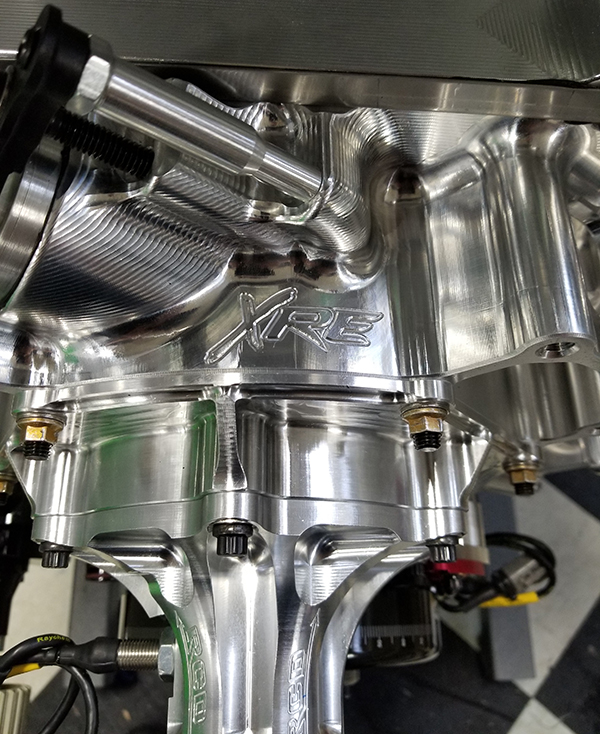
The piston combination is built for Xtreme by Diamond. The Pro Mod engine runs gas-ported pistons with a Total Seal ring package. The engine also features Trend TP1 wrist pins and Trend push rods, GRP connecting rods, a Bryant crankshaft, a Bullet camshaft, Clevite bearings, Manton rocker arms, Manley intake and exhaust valves, PSI springs, and Victory retainers and locks to finish out assembling the heads.
“We actually have Auto Verdi, which is a company in Sweden, that builds us a billet dry sump pan that houses a seven-stage dry sump pump that bolts to the engine,” he says. “That’s standard on our NHRA Pro Mod engines. We’ve also got our own billet intake manifold set up for fuel injection that Noonan also machines specific for us. That finishes off the top of the engine.”
Xtreme doesn’t have a dyno in-house, but with years of experience on the billet Hemi stuff, the shop knows those combinations well enough to where they can put one together, do a tune up and send it to the track.
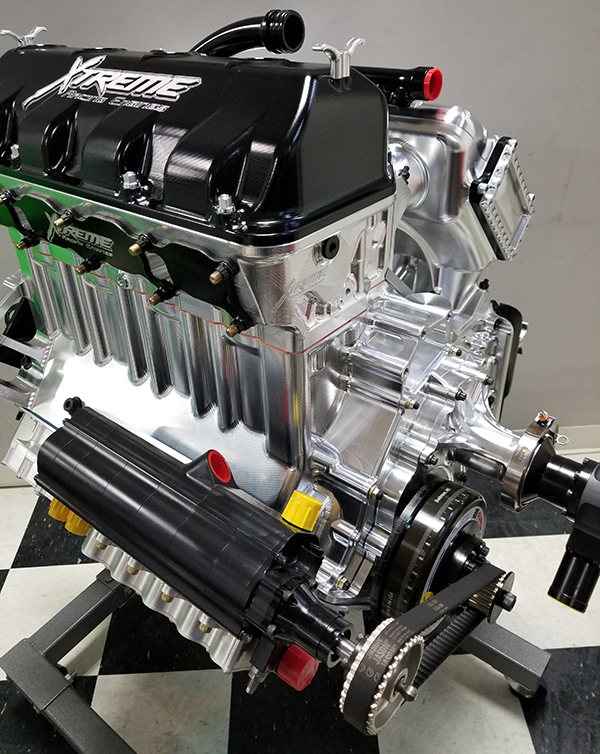
“We let the numbers speak for themselves,” Stevens says. “We’ve got some customers who like to run their engine on a dyno, but nine out of 10 engines go straight in the race car.”
The NHRA Pro Mod engine, like most engines coming out of Xtreme, gets fitted with MoTec fuel injection and billet Atomizer fuel injectors, as well as 88-millimeter Garrett turbos.
“Generally, on the NHRA combination, these engines will be about 12:1 compression ratio and it will make between 3,200 and 3,300 horsepower – and that’s really solely because of the turbo size and boost pressure we’re limited to,” he says. “If you take the same engine and just strap on a larger set of turbochargers – now you have an engine that’s capable of making 5,000 horsepower. It’s really more limited by how much air we can stuff in and not really by any of the components that are on it.”
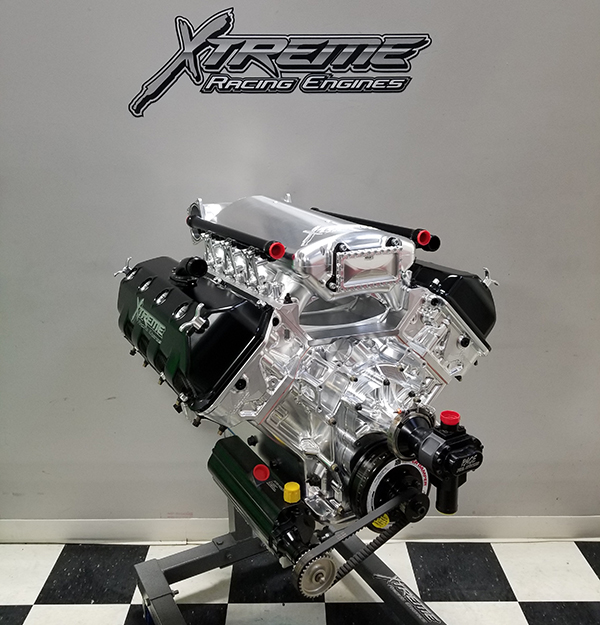
Limits or no limits, Carl Stevens Jr. knows how to build race winning engines. Just ask his customers, or refer to his most recent bank statement!
The Engine of the Week eNewsletter is sponsored by Cometic Gasket and Penn Grade Motor Oil.
If you have an engine you would like to highlight in this series, please email Engine Builder magazine’s managing editor, Greg Jones at [email protected].

